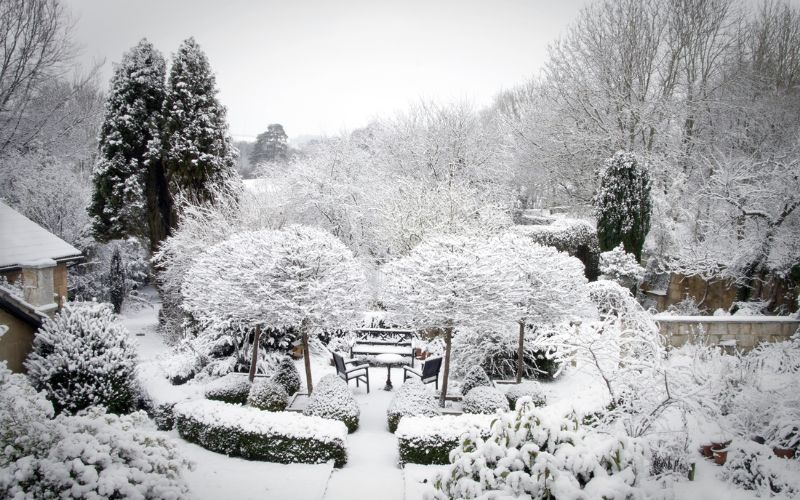Winter is coming and with it the cold weather.
But don’t worry, you can prepare your garden for winter so that it will be ready when spring arrives.
Just follow these simple steps and your garden will be in good shape when the snow starts to fall.
Clean up your garden and remove all debris
As the gardening season comes to an end, it’s important to take some time to clean up your garden and remove all debris.
This includes removing dead leaves, stems, and flowers, as well as any other unwanted materials.
Leaving these things in your garden can provide a perfect hiding place for pests and diseases, which can then overwinter and cause problems next spring.
In addition, debris can also lead to excessive thatch build-up, which can make it more difficult for new growth to emerge in the spring.
By taking the time to clear away debris now, you can help ensure a healthier garden come next growing season.
Cut back any dead or dying plants
One important task is to cut back any dead or dying plants.
This helps to tidy up the garden and makes it easier to care for in the winter months.
It also helps to reduce the spread of diseases, as diseased plant material can overwinter in the soil and infect new growth in the spring.
Finally, cutting back dead plants helps to make room for new growth in the spring.

Mulch around plants and trees to protect them from the cold weather
As the days grow shorter and the temperatures start to drop, gardeners begin to think about ways to protect their plants from the cold weather.
One of the most effective ways to insulate plants is to apply a layer of mulch around them.
Mulch helps to block the flow of heat, keeping the ground around plants warmer and preventing them from being damaged by frost.
In addition, mulch helps to retain moisture in the soil, preventing plants from drying out during periods of low humidity.
Gardeners can choose from a variety of organic materials for their mulch, including straw, leaves, and grass clippings.
By taking the time to apply a layer of mulch around their plants, gardeners can help them survive the winter months and enjoy a healthy spring growth.
Store tools and equipment in a safe place
As the gardening season comes to a close, it’s important to take the time to prepare your tools and equipment for winter.
Exposed to the elements, they can quickly become damaged and may even pose a safety hazard.
Start by giving them a thorough cleaning. This will remove any dirt or debris that could cause rusting or corrosion.
If any of your tools are damaged, make sure to repair or replace them before storing them away.
Once they’re clean and in good condition, choose a dry, sheltered spot to store them. A garage or shed is ideal, but if you don’t have one of these, simply covering them with a tarp will help to protect them from the worst of the weather.
By taking these simple steps, you can ensure that your tools will be in good condition when the gardening season rolls around again.
Lift any tender plants
An important task when preparing your garden for winter is to lift any tender plants that will not survive a frost.
Tender plants include annuals, biennials, and certain kinds of bulbs.
Annuals and biennials must be replanted every year, so they can be easily replaced.
Bulbs, on the other hand, can last for many years if they are properly cared for.
When lifting bulbs, it is important to be careful not to damage the roots.
Once the bulbs have been lifted, they should be stored in a cool, dry place until it is time to plant them again in the spring.
Clear out your compost bins
You should consider cleaning out your compost bins before the onset of cold weather.
If left unchecked, compost bins can quickly become a breeding ground for pests and diseases.
By clearing out the bins and giving them a good cleaning, you can help prevent these problems from taking hold.
The compost that you remove can be used as mulch around the plants that will stay in the ground over the winter, it will help to protect them from frosts, snow and cold conditions.
Check your greenhouse heating
If you have a greenhouse or similar structure that will be used for housing plants over the winter then you’ll need to make sure that it is free from draughts and that the heating is working.
This is especially critical if you live in an area where freezing temperatures are common.
A properly functioning heater will help to keep your plants warm and prevent them from being damaged by the cold.
In addition, it is also important to make sure that the greenhouse is well-ventilated but not draughty.
Check the greenhouse for cracked glass and other damage and replace or patch up to prevent cold draughts.
Check also that the doors fit correctly and adjust if necessary.
Final words
Preparing your garden for winter is important if you want to ensure that your plants survive the cold months and come back healthy in the spring.
By taking the time to perform some simple tasks, you can help to protect your plants from the worst of the weather and give them the best chance of thriving.






